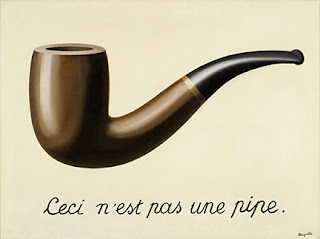 |
| Search for the Real: Hans Hofmann |
Think of Hans Hofmann, the well respected artist and teacher who wrote a small but important book on art: The Search for the Real, or think of R.G. Collingwood, the British philosopher who wrote The Principles of Art — click the links and buy the books.
Hofmann is a quick read. Collingwood is a struggle. Clearly, go with Hofmann first.
At the age of ten I took my first art class at what was then the Willistead Art Gallery in Windsor. The classes were held in the coach house of a former estate designed by Albert Kahn, the famous Detroit, Michigan, architect.
The place had great atmosphere. Art and craft were melded together in the amazing home commissioned by the second son of whisky baron Hiram Walker.
As a student, I was far more craftsman than artist. I had good control for a young boy but I prostituted my skill. I used my skill to make quick sketches of Mickey Mouse to sell for a nickle to other students.
Drawing Mickey is easy. Just think circles. I would have taught the other kids how to draw good Mickeys but the art instructor shut down my budding business. Drawing Mickey was not art, at least he was not my art. I was told to leave Mickey to Walt Disney and his cartoon-making factory.
At that time I understood that drawing Mickey was not art. What I failed to understand was that drawing a real mouse was also not art. As long as I was a slave to reality, I was not an artist but a craftsman.
Hans Hofmann tells us:
- "Nature’s purpose in relation to the visual arts is to provide stimulus – not imitation. . . . "
- "The creative process lies not in imitating . . . "
The camera has removed the tyranny of imitation from art but not the pressures of reality. Ink on a page is real. If you question this statement, try and wash the inks stains from a kid's clothing.
When a child puts crayon to paper, the result is real. No one should look at a child's work and say dismissively, "It's all scribbles."
Truth be told, a child's scribbles are more "real" than some very popular "art." I'm thinking here of the work of Thomas Kinkade. Although I admit Kinkade was both artist and craftsman, I think of him more as an entertainer than artist, more magician than painter.
 |
| The Treachery of Images: This is not a pipe. |
Fiona, 3, dips her largest brush into a pot of purple paint and declares, "This is a large colour. It needs a large space." I watch in amazement as she proceeds to dominate the white paper with broad, wavy strokes of purple.
When she puts a dab of green at the bottom, I ask her why that colour and why there. She tells me her painting needs something right there and a small green circle is "perstick." Fiona's way of saying "perfect."
Scribbles? Yes — thoughtful scribbles. These are real scribbles not like, I must confess, my scribbles. I only paint imitation scribbles. My scribbles are not honest scribbles like those done by little children.
 |
| C'est un griffonnage. Vraiment: It is a scribble. Really. And art. |
Why is this important? Does any of this having any bearing on the everyday world? As a matter of fact it does.
 |
| Recalls Clement Greenberg and the David Smith's sculptures. |
Yes, they do. And mom destroys it. Ceci n'est pas un griffonnage. (The blogger behind Couturier Mommy has commented on my criticism. I've pasted her polite remarks in the comments area below this post.)
"Picasso, Braque, Mondrian, Miro, Kandinsky, Brancusi, even Klee, Matisse and Cézanne derive their chief inspiration from the medium they work in. The excitement of their art seems to lie most of all in its pure preoccupation with the invention and arrangement of spaces, surfaces, shapes, colors, etc. . . . "
— Clement Greenberg
If you must have realism, there are still lots of artists working in the realistic vein, although few artists are slaves to realism today. As Fiona told me, and I am sure Hans Hofmann would have agreed, strawberries may be red in the field but they can be purple in a painting.
 |
| Grampa Bill hams it up for Fiona. |
And don't be too frightened to let a child use your point and shoot. Teach them to keep the camera strap wrapped around a wrist or arm for a little insurance against dropping, and you'll be amazed at their photography. Fiona, 3, regularly borrows my small camera.
I've encouraged a friend, who loves both realism in art and orchids, to blend his two loves and shoot pictures of his beautiful flowers. Doing this is a great way to learn to appreciate colour, form and perspective on a flat surface. It may even open one's eyes to the wonders of abstract art.













